
Domestic
10:26, 29-Apr-2019
The business model behind Luckin's explosive growth
By Yu Jing
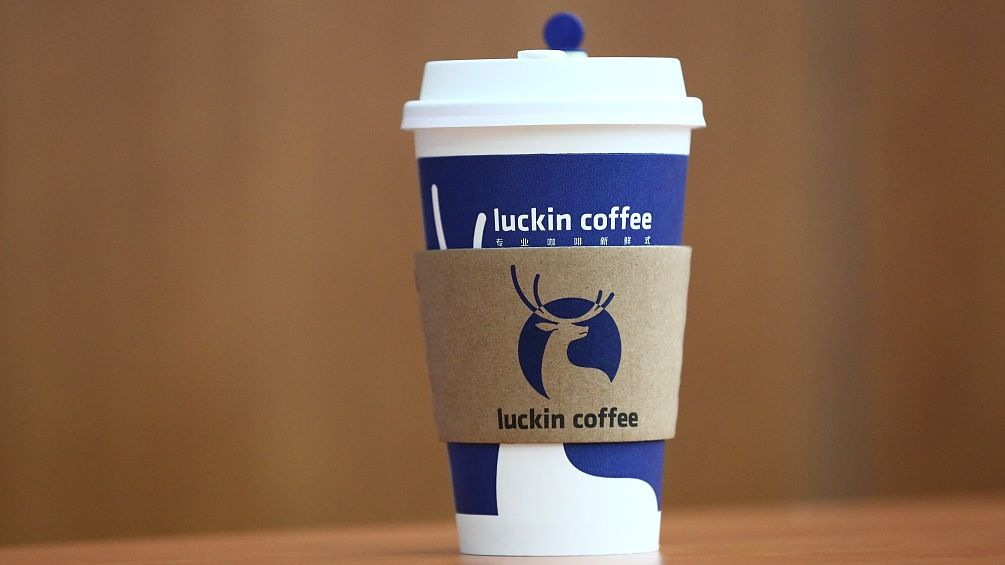
Chinese coffee chain Luckin filed for an initial public offering in the U.S. last week, after exploding onto the Chinese coffee market in 2017.
In a market that has been dominated by Starbucks for two decades, Luckin is catching up fast. The startup has opened 2,370 stores nationwide in 18 months and plans to open 2,500 more stores this year. In comparison, Starbucks has 3,600 stores in China after 20 years in the market.
In the world's biggest consumer market, Luckin's digital-first strategy is enabling the brand to compete against internationally-recognized foreign rivals on an equal footing.
Luckin's digital-first strategy
Two assets are essential for Luckin's business model, as it described in its IPO preliminary filing – mobile apps and its store network.
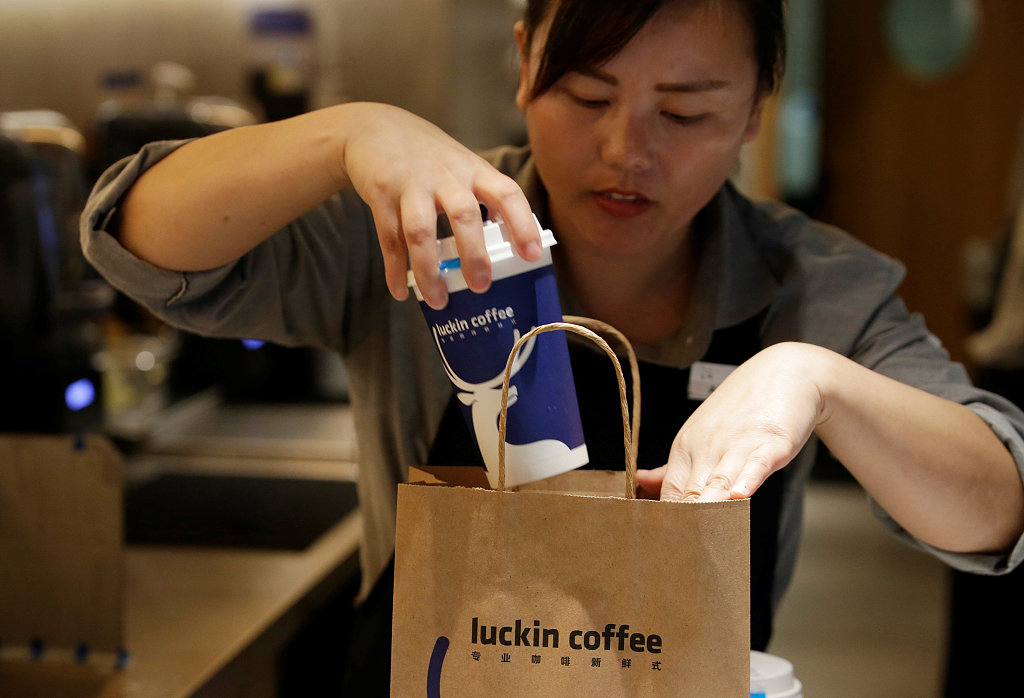
A barista packs a coffee for an online order at a Luckin Coffee store in Beijing. /VCG Photo
A barista packs a coffee for an online order at a Luckin Coffee store in Beijing. /VCG Photo
Unlike Starbucks which offers a cozy environment for people to socialize, Luckin's stores are mostly grab-and-go. In fact, 91.3 percent of its stores are nothing but small kiosks with limited seating. Consumers order on the app, come and grab their coffee in the store and go.
Many of its stores are in less-bustling locations that few would pay attention to unless their Luckin app directs them to it.
"Starbucks's strategy is based on real estate whereas Luckin is based on smartphones," Jeffrey Towson, professor of investment at Peking University Guanghua School of Management, told CGTN. While Starbucks wants high visibility and high traffic locations because their customers come in through the front doors, Luckin is focused on directing customers' attention to their phone and ordering through the app.
The digital-first strategy helps Luckin save operational costs and expand much faster, added Towson. Since Luckin does not need to spend much time and money on renting and refurbishing stores, it in theory has a cheaper business model.
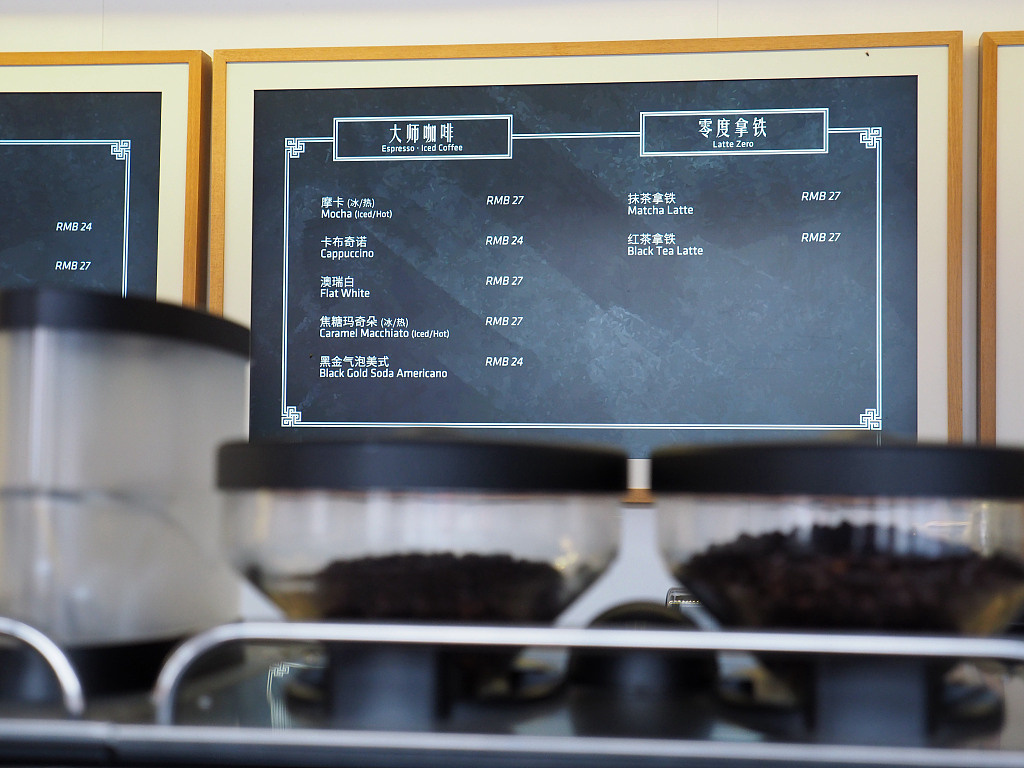
Menu of the Luckin coffee. /VCG Photo
Menu of the Luckin coffee. /VCG Photo
A review of Luckin's menu shows that all of its coffees are within the price range of less than 30 yuan. For Starbucks, however, 30 yuan can only get you an espresso or an Americano.
A costly battle for market share
It's not surprising that Luckins' DNA lies in technology, since the team of founders mostly came from the ride hailing platform Ucar. The founder of Luckin, Qian Zhiya, is a former chief operating officer at Ucar. When Luckin was founded, job interviews were reportedly conducted in the Ucar offices.
Luckins' marketing strategies, therefore, largely resemble those seen in the ride-hailing and bike-sharing industry – tapping into consumer's social circle and offering heavy discounts.
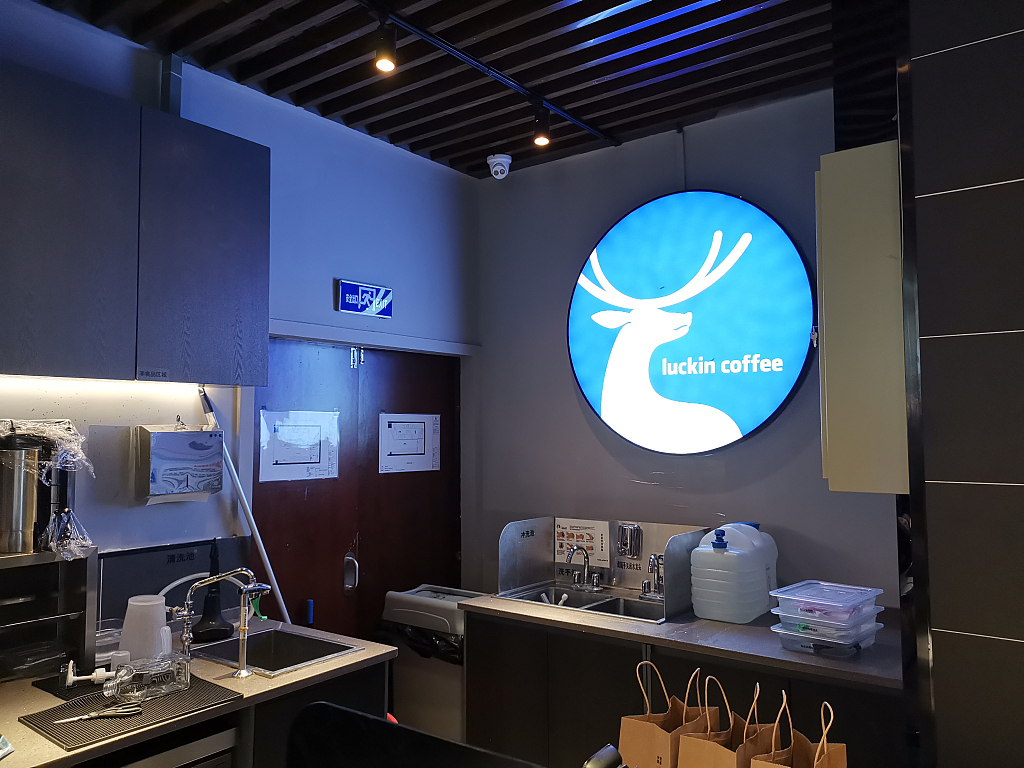
A Luckin store in Wuhan. /VCG Photo
A Luckin store in Wuhan. /VCG Photo
All users who sign up for the app get their first coffee free, and are given different types of coupons including buy-one-get-one-free coupons, 50 off etc. You can also get extra coupons for referring friends to sign up. In the end, it is not rare to see a large latte costing only 10 yuan after the heavy discount.
In the first quarter of 2019, Luckin's net income was 478.5 million yuan with a net loss of 551.8 million yuan. During 2018, though it had 840.7 million yuan in revenue, it also had a net loss of 1.619 billion yuan.
Some fear that the discount model that lets Luckin capture the market quickly may not be sustainable. Wang Qinglin, analyst at iiMedia Research told CGTN that since August 2018, the number of active monthly users on Luckin app stayed around 400,000 without a significant increase. She cautioned that if Luckin continues to scale up without an increase in demand, it may face further loss in revenue.
Offering heavy discounts is a strategy that many startup Internet companies in China have tried. Didi, China's leading ride-hailing platform, and Meituan, the food delivery platform, both used heavy discounts at the initial stage. Though both suffered from loss in revenue, their dominant position in the market was secured nonetheless.
Can digital change retail coffee?
China is not yet a coffee-drinking nation. Chinese people drink on average six cups of coffee per year whereas that figure for U.S. consumers is 388, for German, 867.
"What Luckin is trying to do is not necessarily to beat Starbucks; The Luckin game is to convince the mass market of China to drink more coffee," said Jeffrey Towson, professor at Peking University. According to recent market research, the instant coffee segment still accounts for the largest share of Chinese coffee industry, though the industry as a whole is expected to experience a 13.4 percent growth.
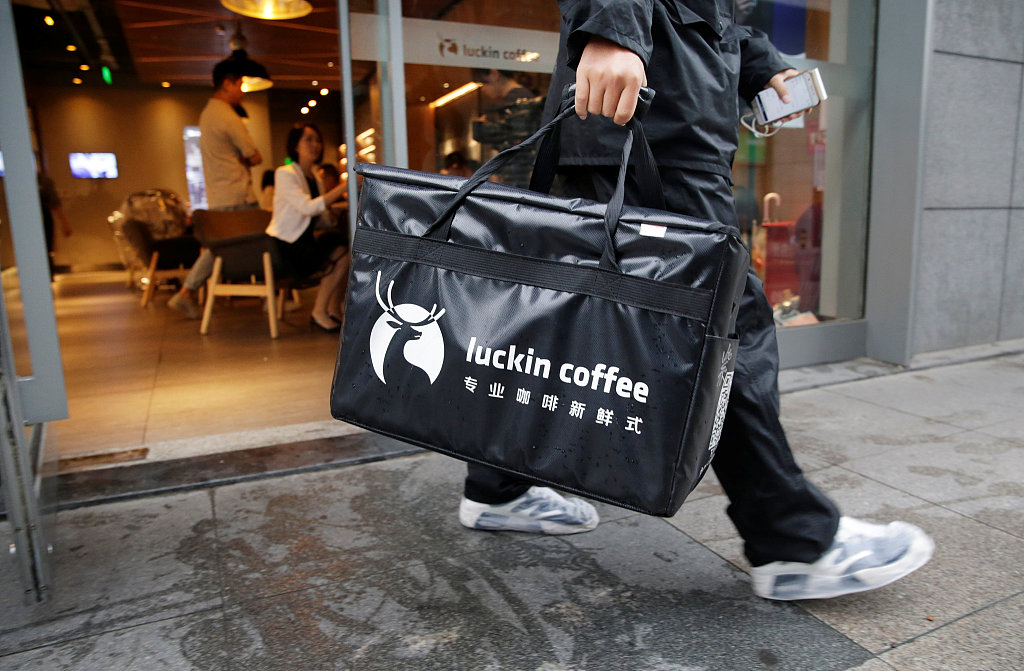
A deliveryman leaves a Luckin Coffee store with a takeout box for online sales. /VCG Photo
A deliveryman leaves a Luckin Coffee store with a takeout box for online sales. /VCG Photo
Luckin's fast expansion reflects a growing trend in e-commerce business in China – the online merging seamlessly with the offline. Jack Ma, the founder of Alibaba, first coined the term "new retail" to describe the business model.
Offline retailers, due to the physical limitations of their brick-and-mortar stores, can only cover consumers close to the stores. Internet companies, on the other hand, by directing users to the online platform, can quickly reach economy of scales, said Wang Qinglin, analyst at iiMedia Research.
But one needs to be cautious in evaluating the impact of digital on retail coffee, Towson said. He described the digital model as "an upgrade" but not transformative. "If 7-11 were to offer an app tomorrow, and I could buy my coffee and pick it up, isn't it just like Luckin?"

SITEMAP
Copyright © 2018 CGTN. Beijing ICP prepared NO.16065310-3
Copyright © 2018 CGTN. Beijing ICP prepared NO.16065310-3